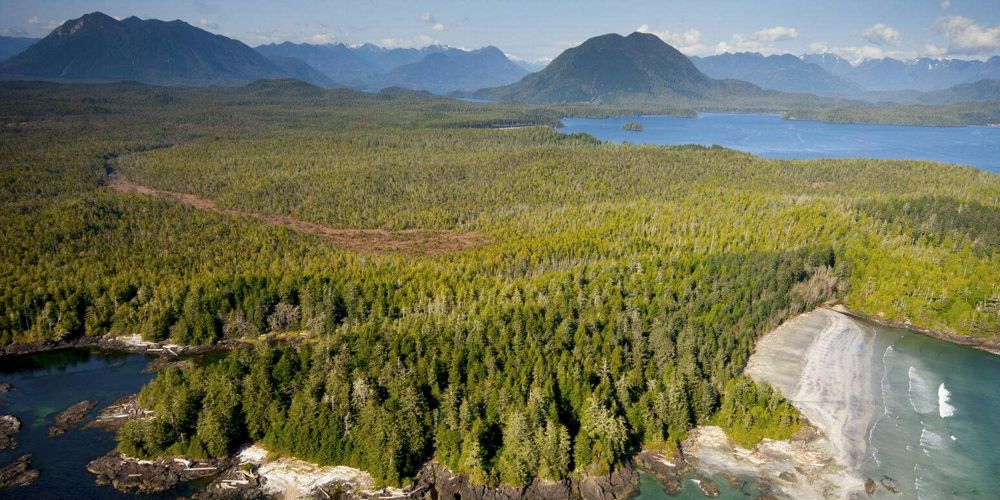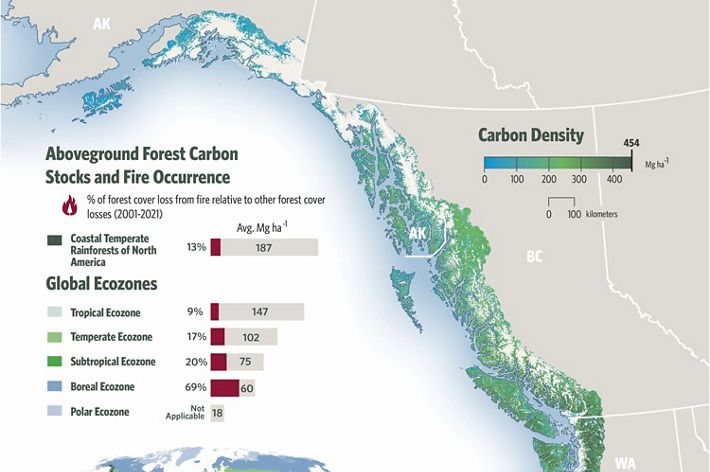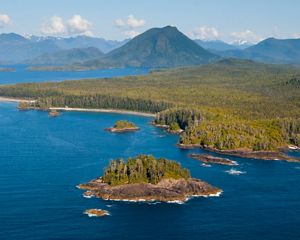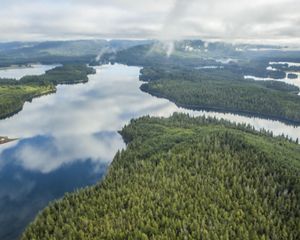Clayoquot Sound Agreement caps major Emerald Edge milestones supported by the Bezos Earth Fund

In mid-June, the Ahousaht and Tla-o-qui-aht First Nations made history with an agreement with the government of British Columbia (B.C.) to protect 76,000 hectares (188,000 acres) in Clayoquot Sound, including some of the last remaining old-growth forests on Vancouver Island.
Land protection in Clayoquot Sound—which includes the old-growth forests on Wah’nah’juss Hilth’hooiss/Meares Island that inspired the historic “War in the Woods” protests and galvanized global attention in 1993—is one of many initiatives The Nature Conservancy (TNC) and our Canadian affiliate Nature United have advanced alongside partners over the last three years in the Emerald Edge thanks to catalyzing funding support from the Bezos Earth Fund.
The Emerald Edge is a vast expanse of rainforests spanning the coasts of Alaska, British Columbia, Washington and Oregon. It’s an ecoregion where industries like logging and mining have often been the only means of economic sustenance for local communities, and advancing old growth forest protections and improving forest management pose unique challenges. The Bezos Earth Fund support has been essential to TNC’s and Nature United’s ability to engage long-term and understand the complicated dynamics of protecting forests and supporting Indigenous partners for lasting stewardship.

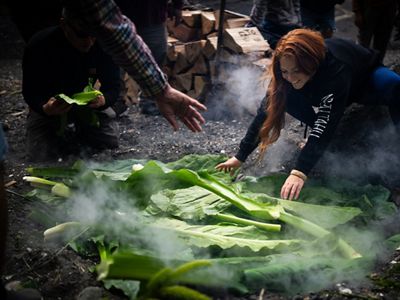
“Establishing these conservancies is a significant milestone for the Tla-o-qui-aht Nation, affirming stewardship authority of our lands that our Hawiih (hereditary leaders) have enacted for untold generations… We’re grateful for the support from organizations and institutions working in right relations to ensure we have the resources needed to care for the land according to our vision.”
—Saya Masso, Natural Resources Manager, Tla-o-qui-aht Nation
What is the Emerald Edge?
The Emerald Edge is the world’s largest coastal temperate rainforest, spanning Alaska, British Columbia, Washington and Oregon. The region is home to hundreds of communities and sustains thousands of species of flora and fauna—including bears, salmon, wolves and whales. It also pulls an estimated 300 million metric tons of carbon out of the atmosphere annually—equal to the annual energy usage of 58 million homes.
We Can't Save Nature Without You
The Nature Conservancy and Nature United work to support the leadership of Indigenous First Nations, Alaska Natives and coastal Tribes with the goal of supporting their community priorities, such as their social and economic well-being, while safeguarding the Emerald Edge’s climate mitigation capacity and its rich biodiversity.
Through development of the Emerald Edge NCS Accelerator Program and the Carbon Map and direct support and funding for Indigenous and other local partners, TNC and Nature United have built high-impact tools that can both advance carbon mitigation in the Emerald Edge while also supporting more resilient, biodiverse ecosystems and vibrant and healthy human communities.
The Work
Over the last three years, the Bezos Earth Fund has supported three major bodies of work in the Emerald Edge, including the Emerald Edge Accelerator Program, the Carbon Map and the permanent protection of old-growth forest in Clayoquot Sound, B.C.
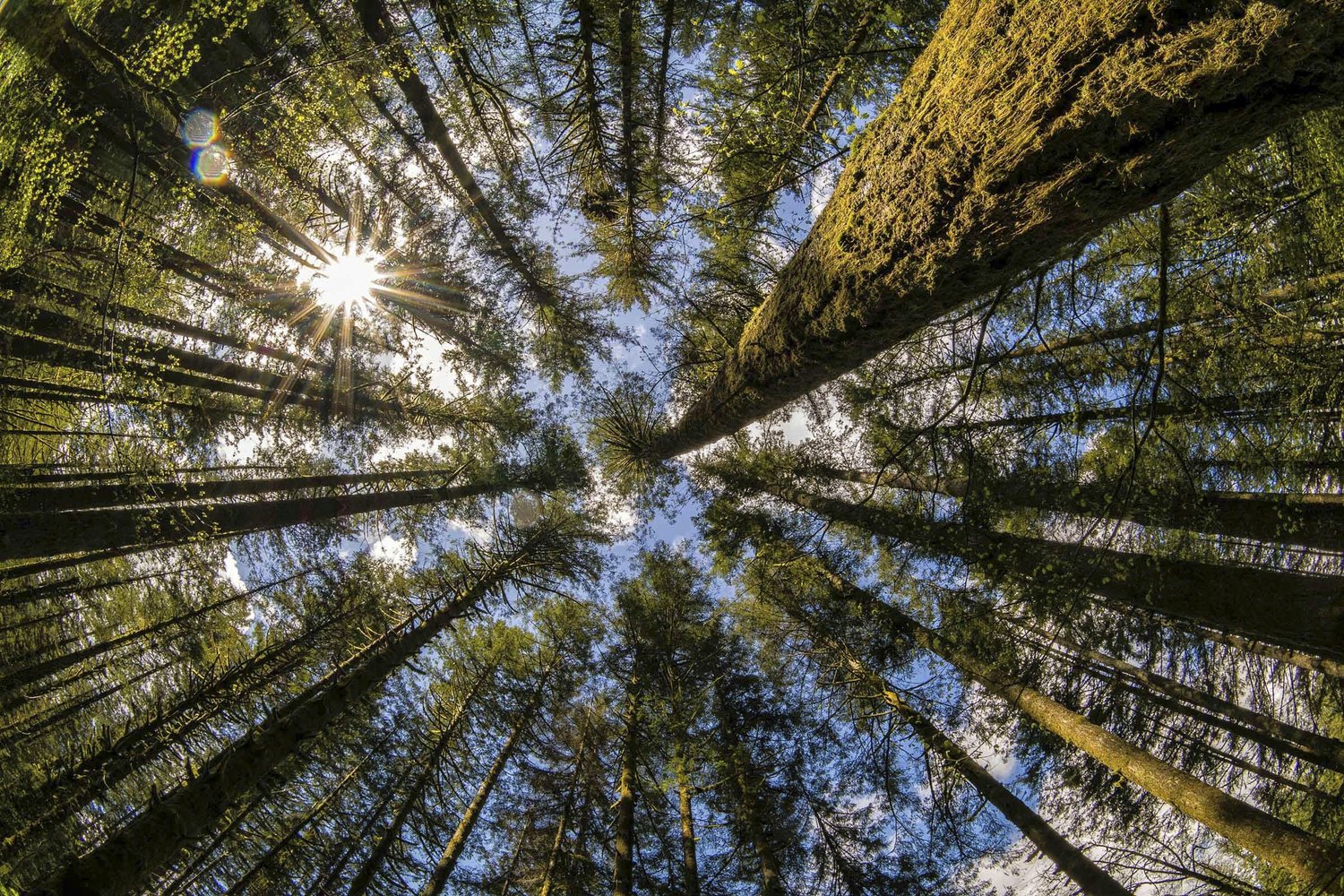
The Accelerator Program
The Emerald Edge NCS Accelerator Program represents an unparalleled opportunity to build on decades of hard-earned progress by supporting a portfolio of Indigenous- and community-led implementation-ready NCS projects.
In the last year, by leveraging carbon science, Indigenous-focused conservation strategies, policy and economic expertise and relationships built over two decades, TNC has developed a database of 60+ high-impact NCS projects with the potential to collectively sequester 9 million metric tons of CO2e over 40 million hectares annually. Because these projects are co-designed alongside our partners, they will have an impact not only for the global climate but will also benefit community well-being and biodiversity.
Project partners, TNC and Nature United are now focused on implementing the 60+ projects in the database and identifying new high-potential projects, including exploring partnerships, policy, economic models, Indigenous rights and authority, sustainable livelihoods and other factors.
The Emerald Edge Carbon Map
As a way of visualizing and better understanding how to design and implement the NCS projects in the database, TNC and Nature United also created the Emerald Edge Carbon Map. This robust landscape-level tool fills an implementational gap, giving TNC, Nature United and project partners the ability to make data-driven decisions about actionable NCS projects that can store additional carbon beyond what would occur without intervention.
By providing a new source of high-resolution and spatial data, the map enables TNC, Nature United and partners to identify, quantify and prioritize areas with substantial carbon additionality potential—meaning locations that could protect or store more carbon when compared to a business-as-usual scenario. A preliminary analysis by the Emerald Edge team has demonstrated that a conservative 10% increase in improved forest management and conservation within the Emerald Edge could contribute 9.1 megatons (Mt) CO2e (CO2 equivalent) annually, or 5.2% of the 2030 land-based climate commitments made by the United States and Canada combined.
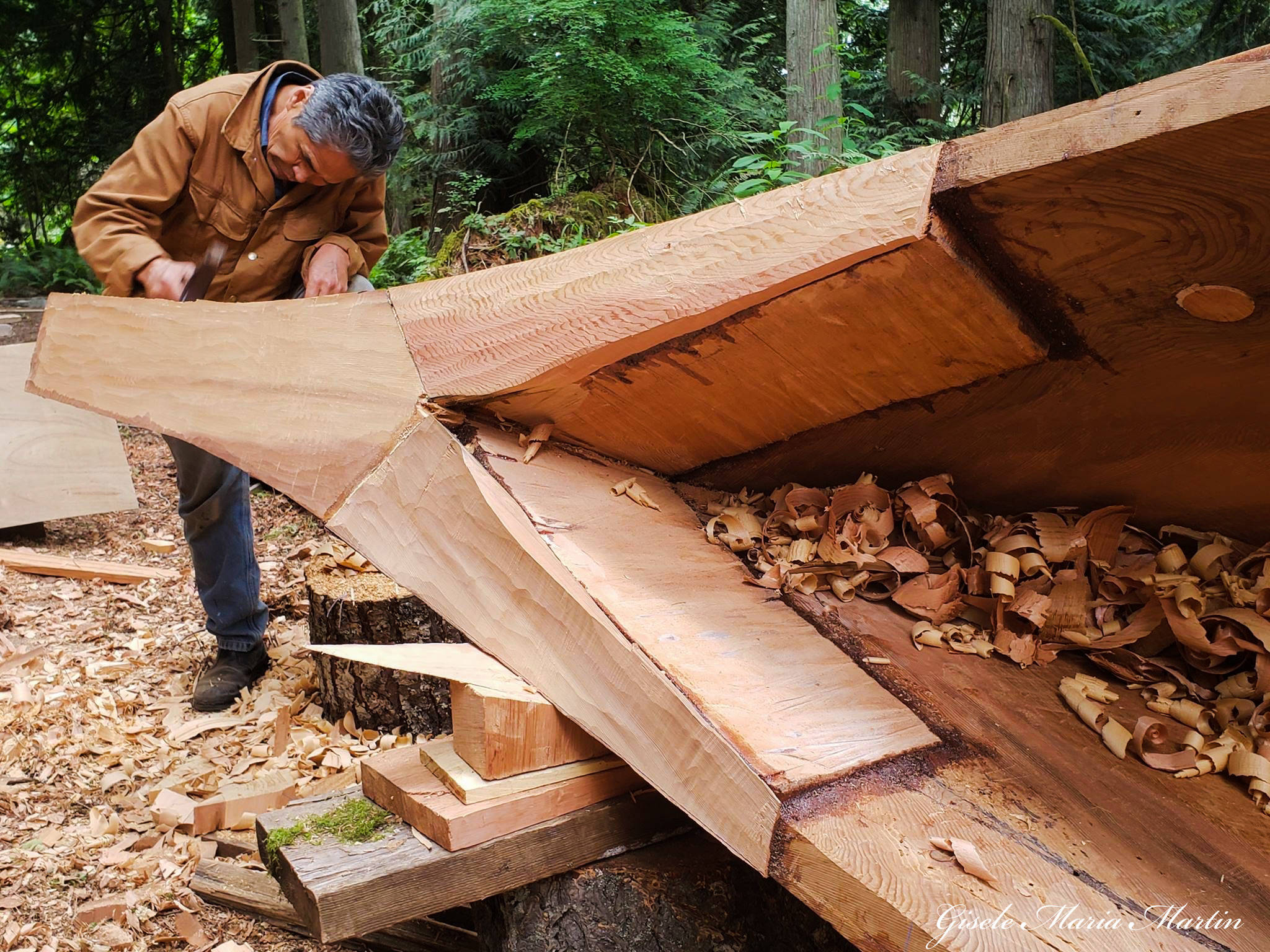
Old-Growth Forest Protections in Clayoquot Sound
The landmark agreement with the Ahousaht and the Tla-o-qui-aht referenced above reflects years of work and substantial progress in the complex processes required to protect old-growth forests in Clayoquot Sound in a way that prioritizes communities as the cornerstone of lasting change.
With the agreement, 76,000 hectares (188,000 acres) in Clayoquot Sound previously licensed for commercial forestry will now be managed according to Indigenous stewardship values. With a commitment of $40 million from Nature United, each will receive an endowment to support ongoing management and stewardship. This new model centers the Nations’ land-use visions while advancing Ahousaht and Tla-o-qui-aht rights and sustainable livelihoods. It also represents a significant breakthrough in the decades-long battles over timber harvesting, Indigenous rights and conservation in the region.
Lessons Learned
The work accomplished with Bezos Earth Fund support has provided invaluable learnings. Foremost among them is the critical importance of investing deeply in strong relationships with Indigenous partners and prioritizing their knowledge, leadership and stewardship every step of the way. This has been the foundation of any progress. The work in Clayoquot Sound in particular has been an excellent learning ground for ourselves as well as project partners and the B.C. government on Indigenous-led conservation.
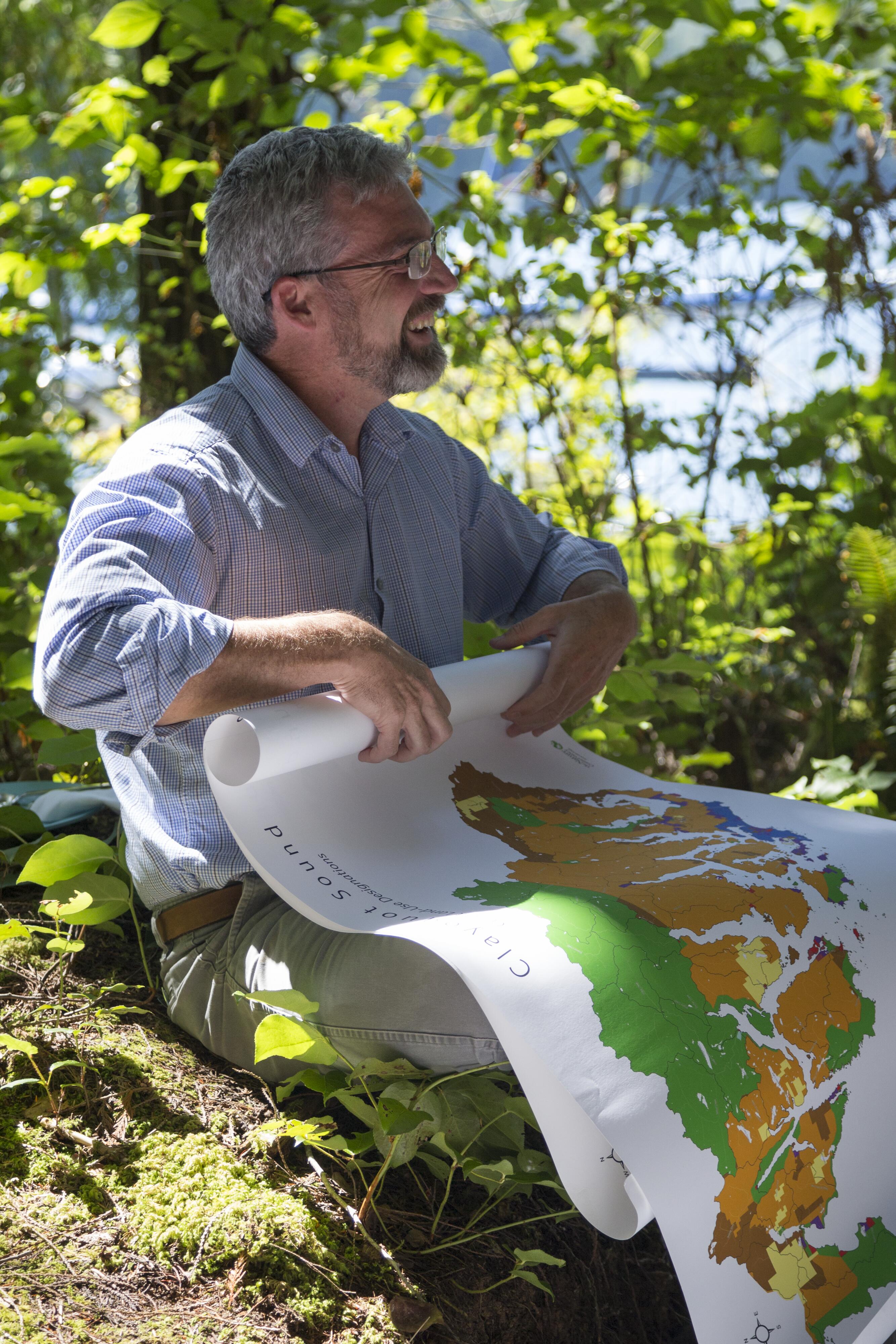
A second learning is tied to the dynamic and unpredictable nature of NCS—as might be expected in natural systems—and the need for adaptable methodologies responsive to evolving external circumstances, such as unanticipated wildfires and other climate disruptions, as well as the potential for shifting partner needs.
TNC and Nature United’s work in the Emerald Edge has been a journey of navigating the transition from systems geared toward near-term economic benefits to those that prioritize Indigenous rights, economic sustainability, environmental conservation and climate resilience. This work serves as proof of concept for this approach, laying the groundwork for future progress.
A Bright Future
Looking forward, TNC and Nature United—with the continued support of the Bezos Earth Fund—will build on the inspiring successes accomplished over the last three years and continue to fundraise and nurture a supportive environment for community partners to advance their priorities alongside natural climate solutions and carbon mitigation across 40 million hectares in the Emerald Edge.
